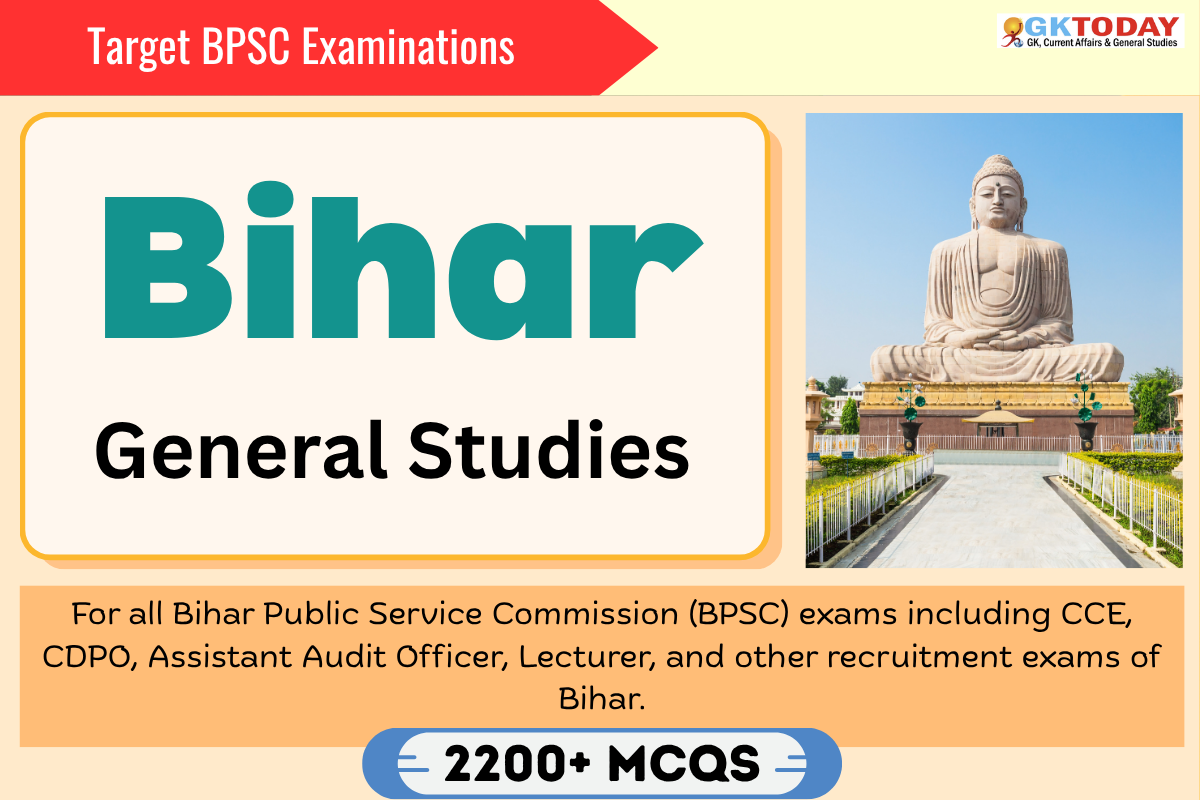States PCS: Bihar GK for BPSC and other Bihar PCS Exams
For all Bihar Public Service Commission (BPSC) exams including 67th-70th CCE, CDPO, Assistant Audit Officer, Lecturer, and other recruitment exams of Bihar.
11. Who is credited with evolving the traditional Bideshia style, originally started by Bhikari Thakur, for modern Indian theatre?
[A] Arun Kamal
[B] Usha Kiran Khan
[C] Satish Anand
[D] Madhukar Singh
Show Answer
Correct Answer: C [Satish Anand]
Notes:
Satish Anand evolved the Bideshia style in 1984, blending indigenous Bihari theatrical traditions for modern Indian theatre. The style was originally started by Bhikari Thakur, known as the “Shakespeare of Bhojpuri.”
12. What is the appropriate student-teacher ratio that Department of Education, Bihar wants to achieve?
[A] 15:1
[B] 58:1
[C] 40:1
[D] 50:1
Show Answer
Correct Answer: B [58:1]
Notes:
Department of Education, Bihar wants to achieve the appropriate student-teacher ratio of 58:1. They want to improve the quality of teaching and Quality of Education.
13. At which place, Upendra Maharathi Shilp Anusandhan Sansthan is situated?
[A] Digha
[B] Munger
[C] Rajgir
[D] Bodh Gaya
Show Answer
Correct Answer: A [Digha ]
Notes:
Upendra Maharathi Shilp Anusandhan Sansthan is situated at Digha. Digha is a residential neighbourhood in Patna. Digha is mostly known for the “Ghats” mean place near Ganga river. Digha is also known for Rnet Software’s, ITI college and WITI college.
Upendra Maharathi Shilp Anusandhan Sansthan is a marketplace to Discover Unique Products including Handmade, Vintage, Ethnic, Organic and Natural products from Bihar.
14. Who was the first chairman of Bihar Public Service Commission?
[A] B. N. Rohtagi
[B] Dr. H. N. Yadav
[C] Rajandhari Sinha
[D] A. K. Choudhary
Show Answer
Correct Answer: C [Rajandhari Sinha]
Notes:
The Bihar Public Service Commission is a body created by the Constitution of India to select applicants for civil services in the Indian state of Bihar according to the merits of the applicants. It was formed on 1 April, 1949.
Rajandhari Sinha was the first chairman of Bihar Public Service Commission. He was the chairman from
1st April 1949 to 31st March 1953.
15. Which is the most popular traditional folk dance of North Bihar?
[A] Jhumar
[B] Kajari
[C] Domkach
[D] Jaat-Jaatin
Show Answer
Correct Answer: D [Jaat-Jaatin]
Notes:
Jaat-Jaatin is the most popular traditional folk dance of North Bihar. It is popular in Mithila and Kosi region. It is usually performed in a couple on moonlit nights in monsoons.
16. In which year, Gandhi Sangrahalaya was established in Bihar?
[A] 1980
[B] 1952
[C] 1967
[D] 1960
Show Answer
Correct Answer: C [1967]
Notes:
Gandhi Sangrahalaya was established in Bihar in 1967. It is a museum and public service institution that tells about the life and principles of Mahatma Gandhi and his role in Bihar during the independence struggle of India. There are total 11 Gandhi Sangrahalayas /museums in India.
17. Which hills are located in the southern Gangetic plain of Bihar?
[A] Gondwana
[B] Dharwad
[C] Himalayan
[D] Aravali
Show Answer
Correct Answer: B [Dharwad]
Notes:
Dharwad hills are located in the southern Gangetic plain of Bihar. It is developed in the form of swine pits of quartzite rocks from Navinagar and Moratal to Munger. It is mainly found in the South-Eastern part of Bihar like Munger, Jamui, and Nawada. They are made up of Quartzite, phyllite, Gneiss, Schist, and slate. The region is dominated by mica-schists.
18. In which year, a conference was organised on the prevention of untouchability at Anjuman Islamia Hall in Patna?
[A] 1935
[B] 1926
[C] 1924
[D] 1932
Show Answer
Correct Answer: D [1932]
Notes:
The conference on the prevention of untouchability at Anjuman Islamia Hall in Patna was organised in 1932.
It was organised on 6th November and was presided by Raja Radhika Raman Prasad Singh.
19. Kaimur plateau is famous for ____________?
[A] Bronze
[B] Copper
[C] Limestone
[D] Lithium
Show Answer
Correct Answer: C [Limestone]
Notes:
Kaimur plateau is famous for Limestone. Kaimur Plateau is a part of Vindhya range. This range is traditionally known for limestone, sandstone, shale and slate which are building materials. Kaimur plateau is the eastern portion of the Vindhya Range.
20. In which Mahajanapada, the modern day Patna and Gaya city were included?
[A] Vatsa
[B] Vajji
[C] Magadha
[D] Anga
Show Answer
Correct Answer: C [Magadha]
Notes:
Patna and Gaya city were included in the Magadha Mahajanapada. Magadha was ruled by Pradyota dynasty, Barhadratha dynasty, Haryanka dynasty, and the Shaishunaga dynasty. The capital of Magadha was Rajgriha. The old name of Rajgriha was Girivraj. The capital was later shifted to Pataliputra which is modern-day Patna.

